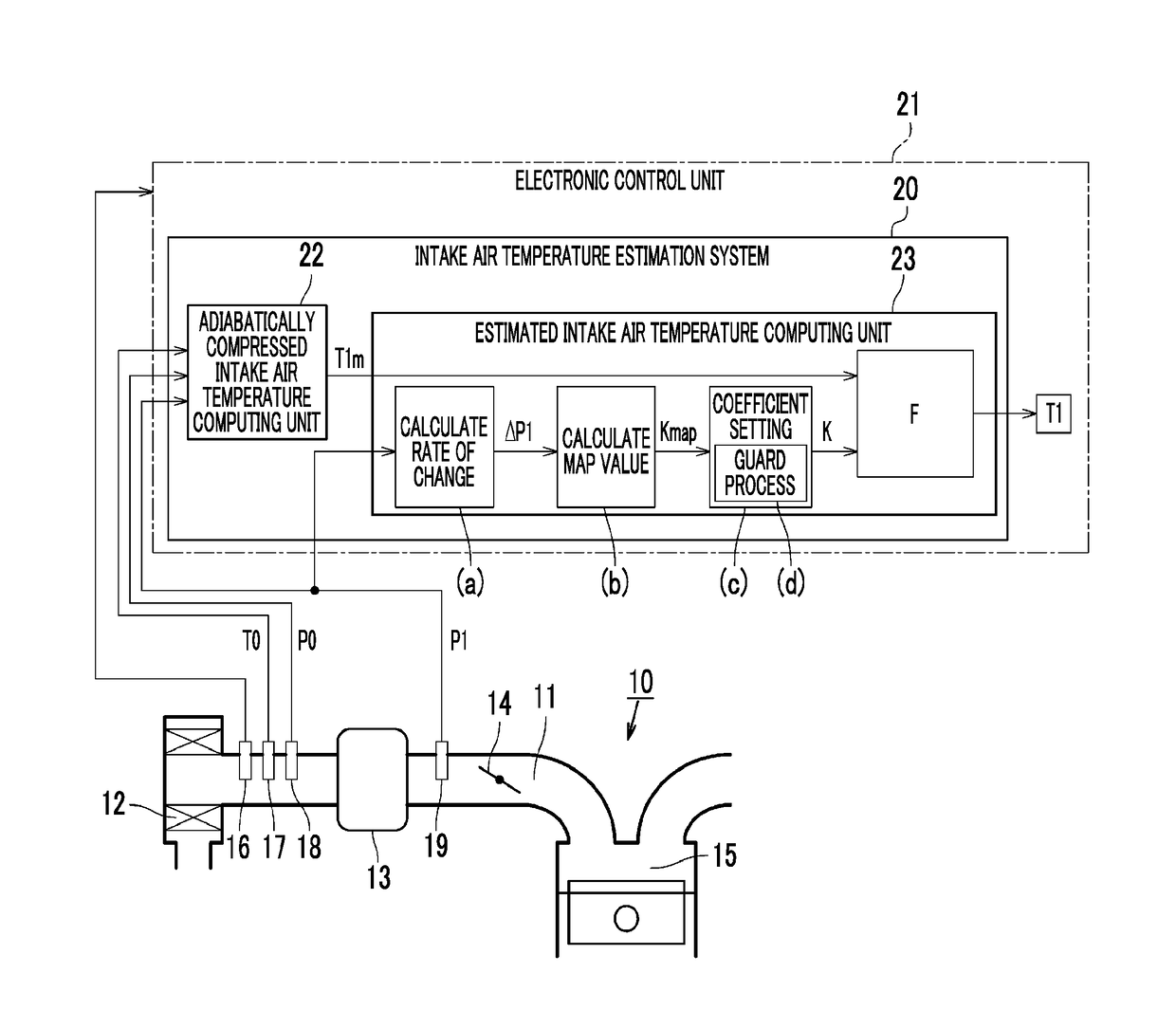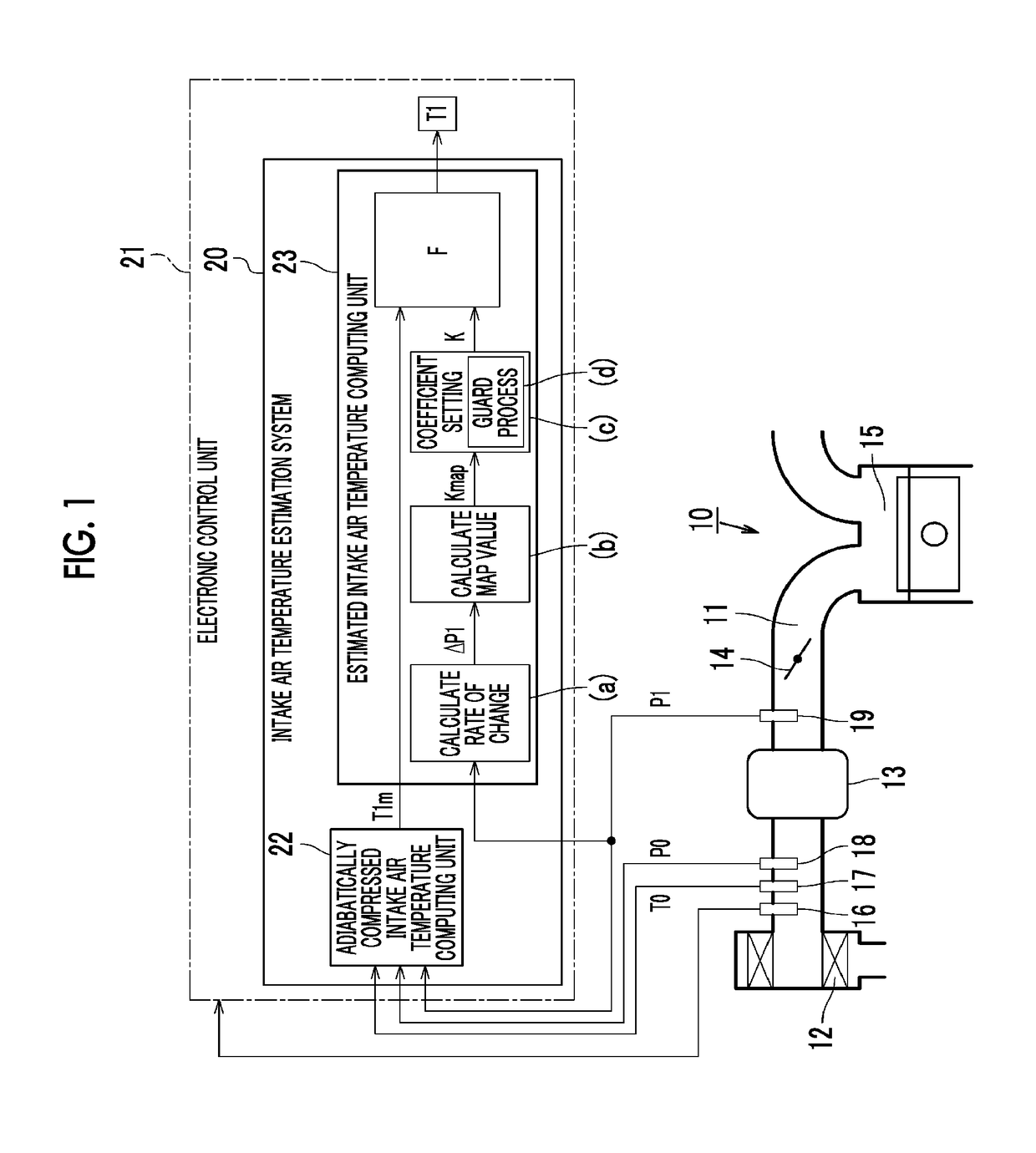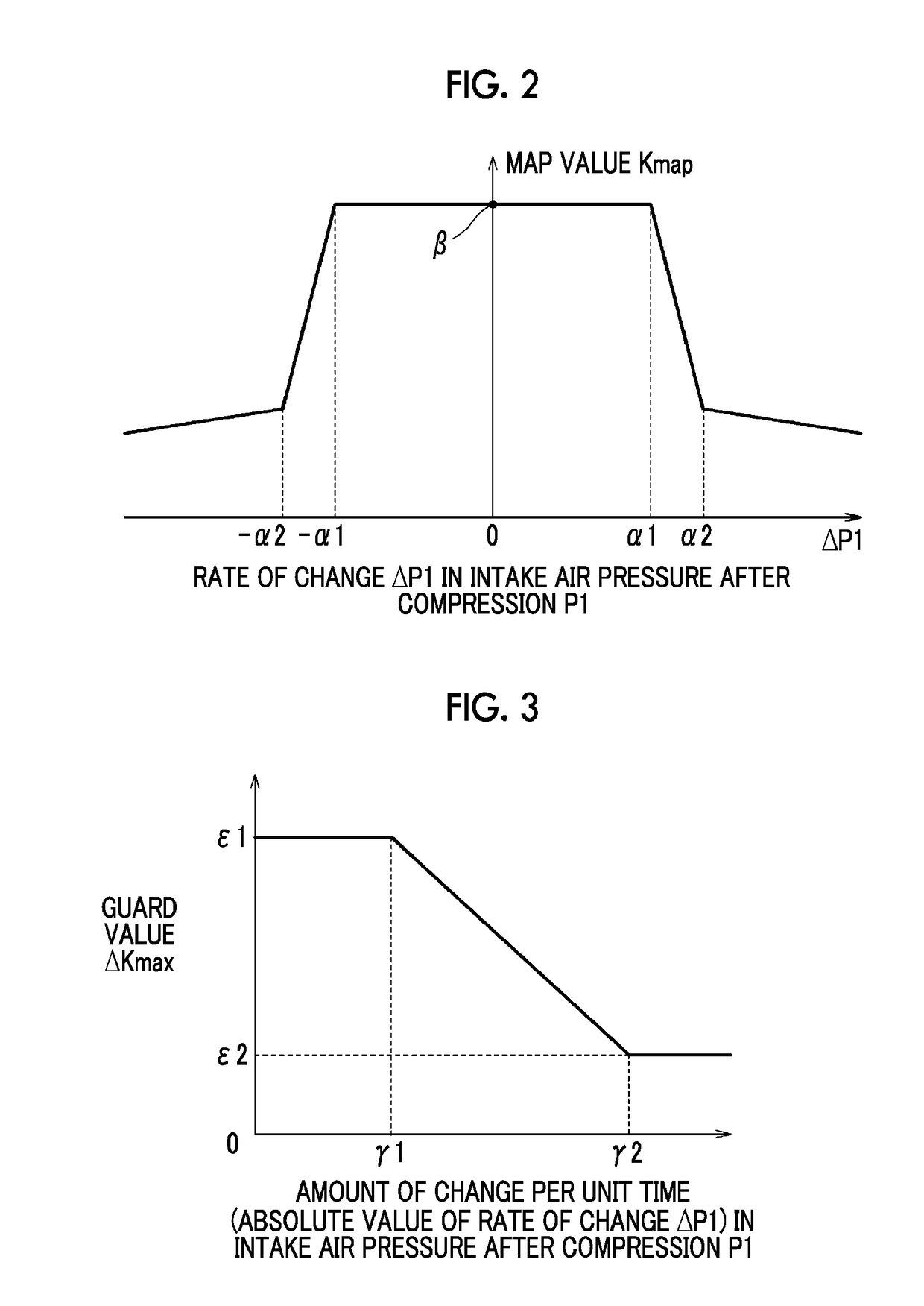Intake air temperature estimation system for turbocharged engine
a turbocharged engine and intake air temperature technology, applied in the direction of heat measurement, electric control, instruments, etc., can solve the problems of inability to accurately estimate the inability to respond to a change in the intake air temperature with respect to a change in the intake air, and the enormous amount of time and effort required to construct such a physical model. , to achieve the effect of accurate estimation of the intake air temperature, simple computation and high followability
- Summary
- Abstract
- Description
- Claims
- Application Information
AI Technical Summary
Benefits of technology
Problems solved by technology
Method used
Image
Examples
Embodiment Construction
[0032]Hereinafter, an embodiment of an intake air temperature estimation system for a turbocharged engine will be described in detail with reference to FIG. 1 to FIG. 8. As shown in FIG. 1, an air cleaner 12 is provided in an intake passage 11 of the turbocharged engine 10. The intake air temperature estimation system 20 according to the present embodiment is applied to the turbocharged engine 10. The air cleaner 12 filters impurities, such as dust, contained in intake air that is taken into the intake passage 11. A compressor 13 is provided in the intake passage 11 at a portion downstream of the air cleaner 12. The compressor 13 is driven by the rotation of a turbine wheel, caused by the stream of exhaust gas from the turbocharged engine 10, or the rotation of a crankshaft that is the output shaft of the turbocharged engine 10 to compress intake air and discharge the compressed intake air to the downstream side of the intake passage 11. A throttle valve 14 is further provided in th...
PUM
| Property | Measurement | Unit |
|---|---|---|
| temperature | aaaaa | aaaaa |
| pressure | aaaaa | aaaaa |
| volume flow rate | aaaaa | aaaaa |
Abstract
Description
Claims
Application Information
 Login to View More
Login to View More - R&D
- Intellectual Property
- Life Sciences
- Materials
- Tech Scout
- Unparalleled Data Quality
- Higher Quality Content
- 60% Fewer Hallucinations
Browse by: Latest US Patents, China's latest patents, Technical Efficacy Thesaurus, Application Domain, Technology Topic, Popular Technical Reports.
© 2025 PatSnap. All rights reserved.Legal|Privacy policy|Modern Slavery Act Transparency Statement|Sitemap|About US| Contact US: help@patsnap.com



